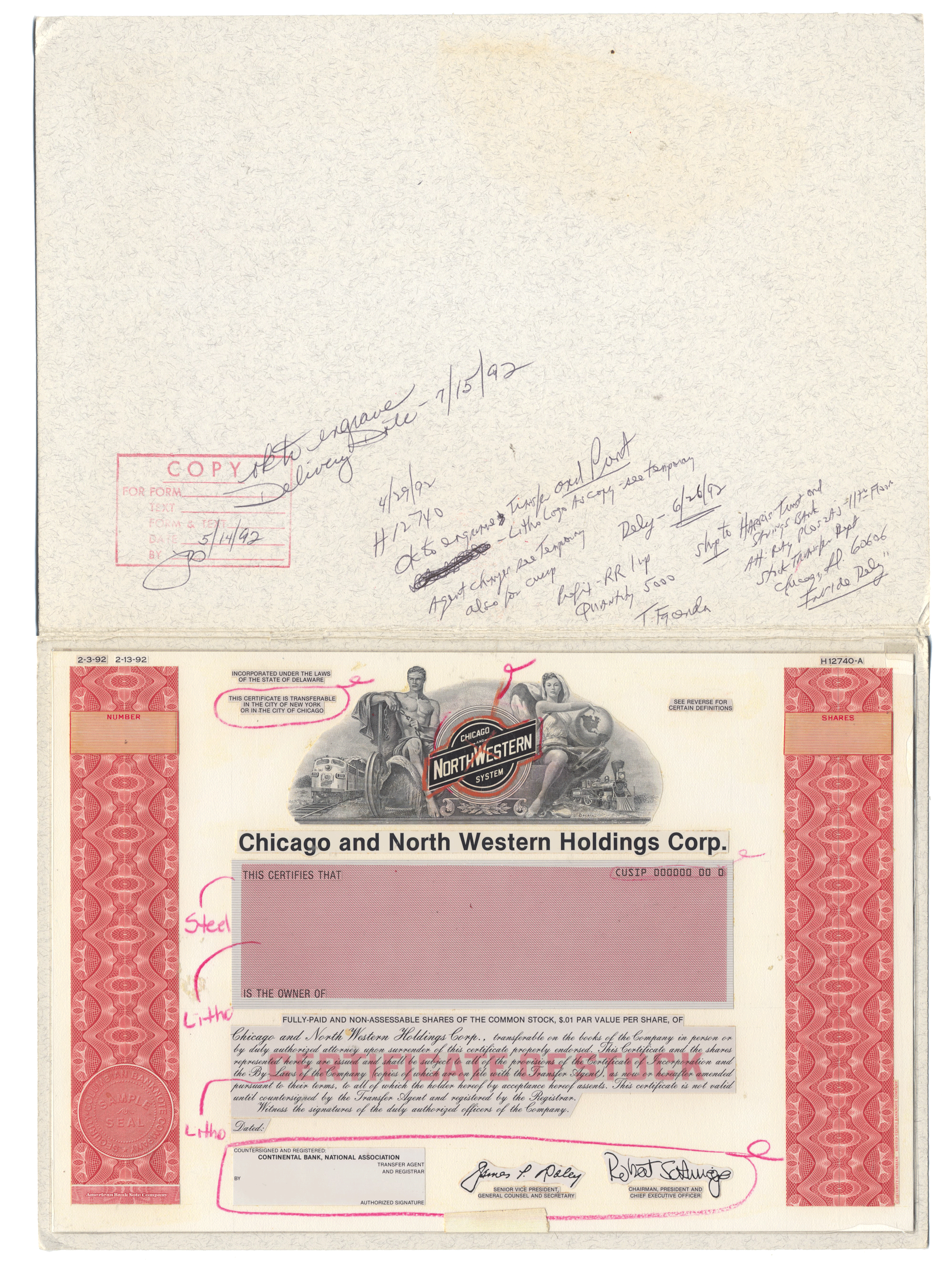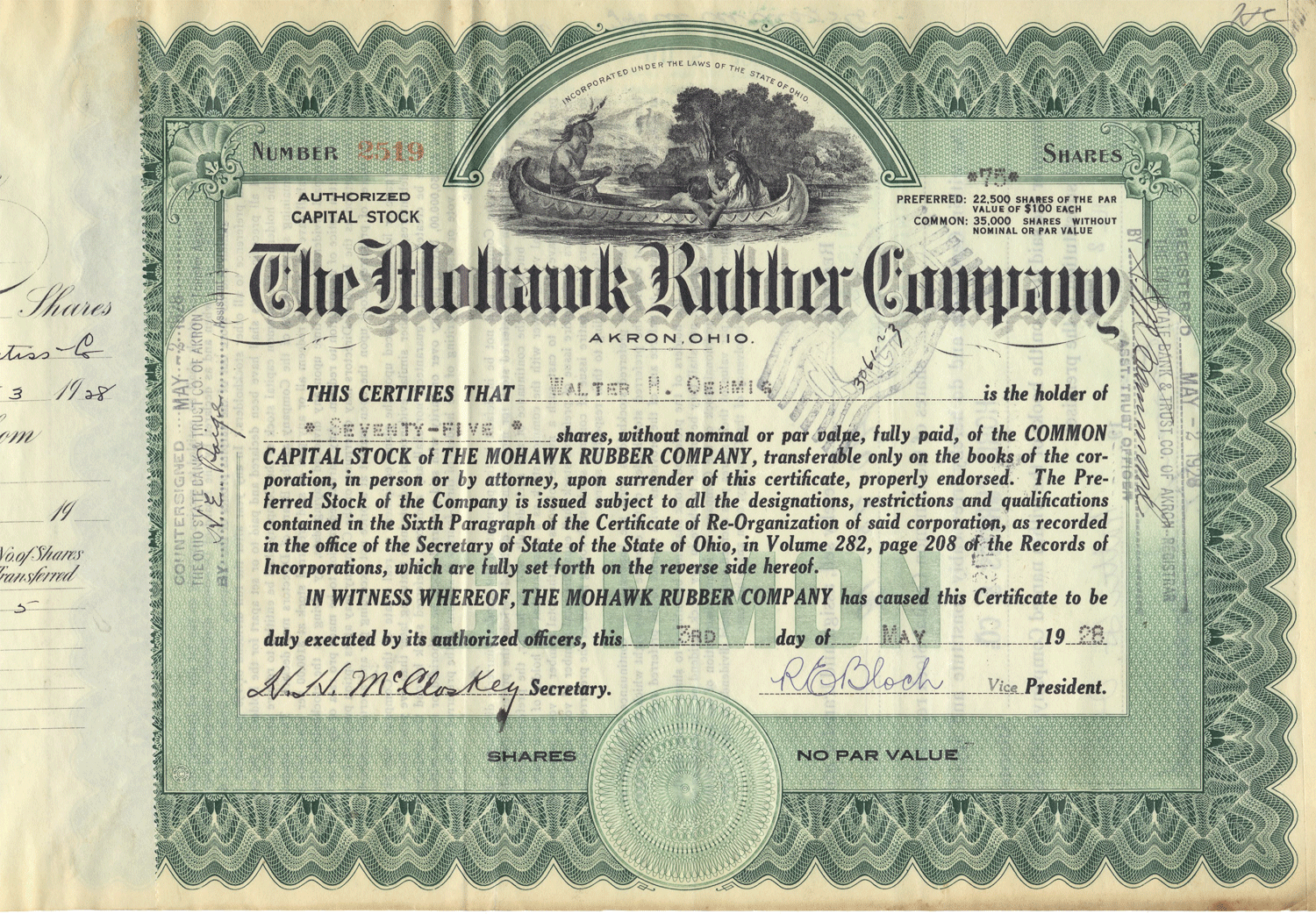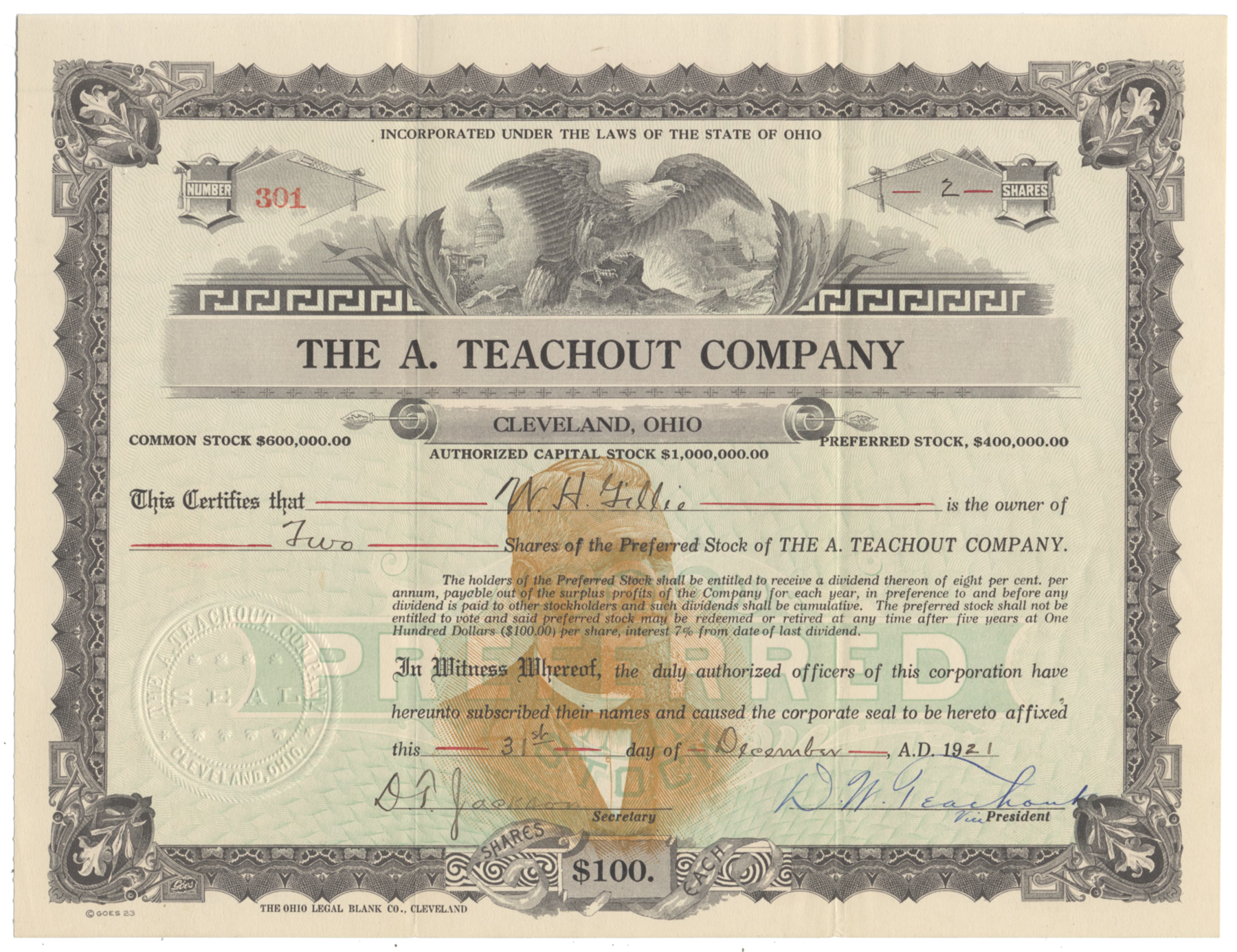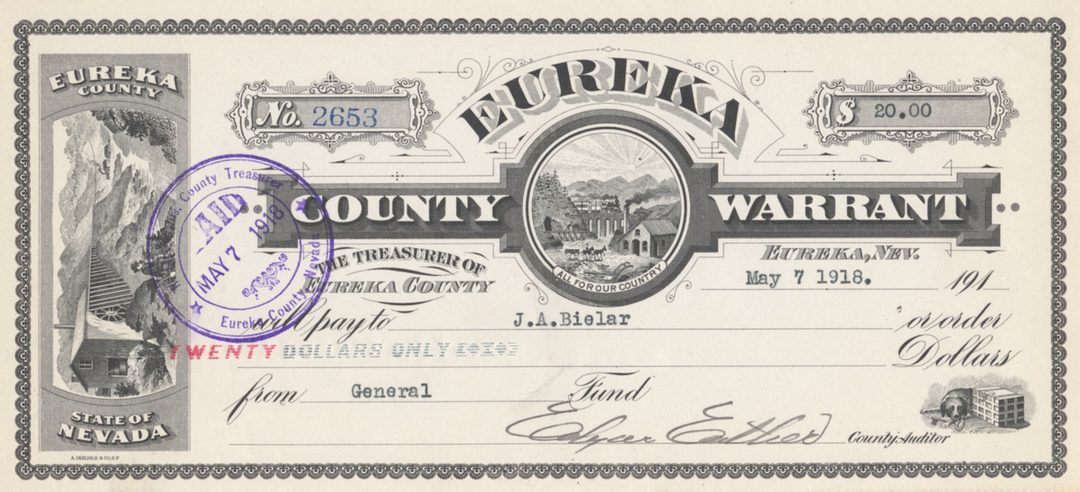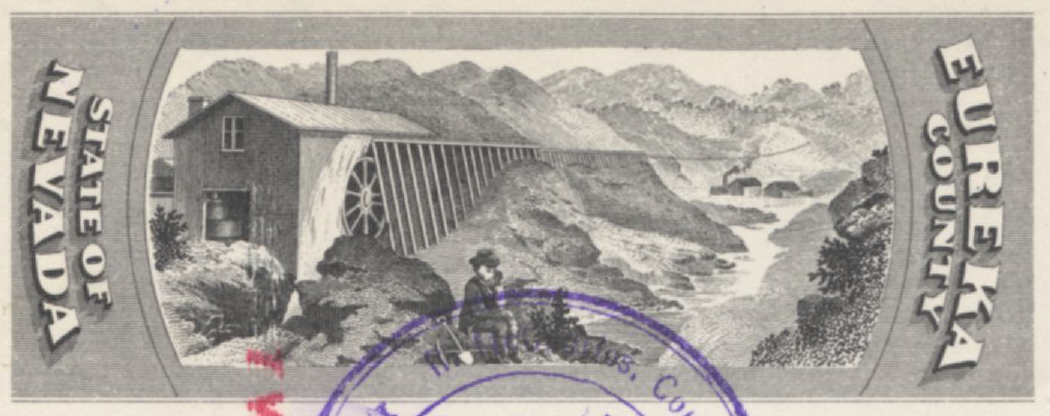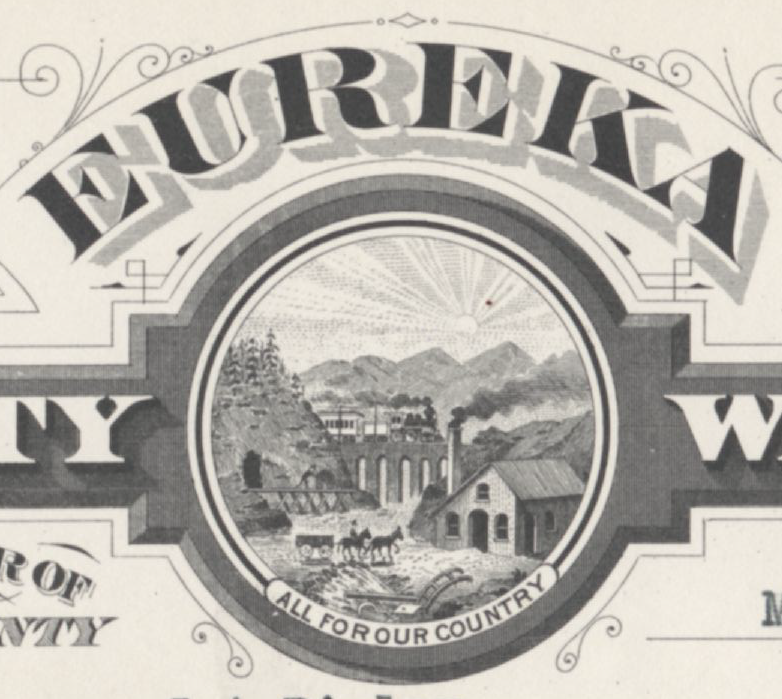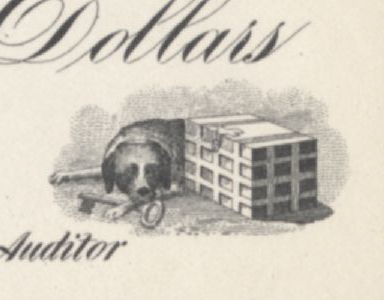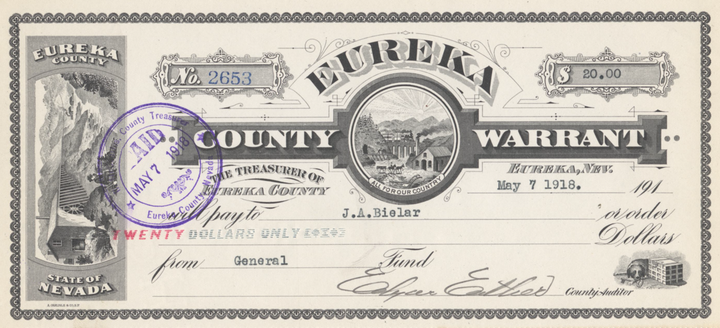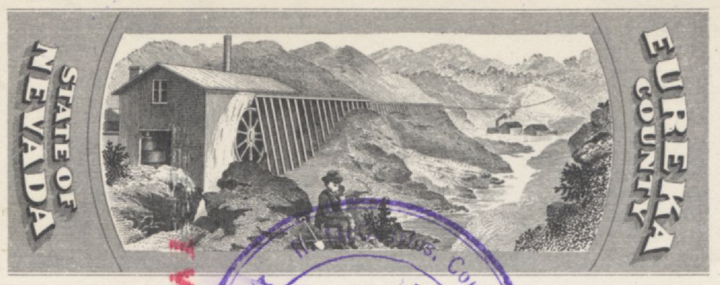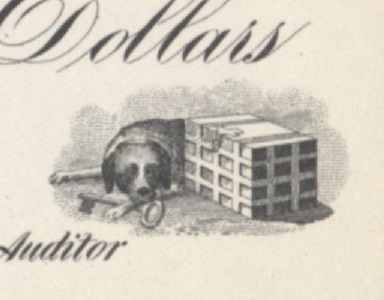Eureka County, Nevada
- Guaranteed authentic document
- Orders over $50 ship FREE to U. S. addresses
Product Details
CompanyEureka County, Nevada
Certificate Type
County Warrant
Date Issued
1910's
Canceled
Yes
Printer
A Carlisle & Co.
Signatures
Hand signed
Approximate Size
9 1/4" (w) by 4 1/4" (h)
Images
Representative of the piece you will receive
Guaranteed Authentic
Yes
Additional Details
NA
Historical Context
Eureka County, Nevada contains all of three towns – Eureka, Beowawa and Crescent Valley.
Silver was discovered in Eureka in 1864. The discovery was America’s first important lead-silver finds. The town did not boom until 1869 when smelters that could separate silver from lead were developed. The county was formed in 1873. By 1878, more than 9,000 people lived here. It was then the state?s second largest city. It started as a city of tents and crudely built structures. Many buildings were moved from the nearby towns of Austin, Carlin, Hamilton, Treasure City, and Elko.
In its heyday, there were 100 saloons, several dozen gambling houses, several theaters, an opera house, numerous churches, fine hotels, and five fire companies. The Eureka Sentinel began publishing in 1870. Other newspapers followed the Sentinel in the same decade. The first school was built in 1872 and opened with 58 students. Sixteen smelters refined the ores in the area. The smoke was so heavy at times that black clouds floated over town leaving soot and dirt everywhere. People started calling Eureka "Pittsburgh of the West." In 1875, an 84-mile long narrow gauge railroad was completed, joining Eureka to the Central Pacific Railroad to the north. This made transportation of the ore to market much easier. The town became home to many immigrants, including the Cornish, Irish, Germans, French, and Italians. They were familiar with mining and smelting in their native countries and were attractied here by good wages and steady work. The Swiss-Italians were charcoal burners. Charcoal was very much in demand as the smelters used large amounts of it to fuel operations. The town's most famous event was the Charcoal War of 1879, which was a dispute over the price of charcoal. The town had a Chinatown. The Chinese worked as cooks, domestics, laundrymen, woodcutters, and as laborers constructing the railroad. In 1878, ore production in the Eureka Mining District peaked at over 118,000 tons valued at $5.2 million. A courthouse was built in 1879, and is still standing with original wainscotting, pressed tin ceiling, and chandeliers. In 1880, the Eureka Opera House was built across the street from the courthouse. Mining was bust by 1890. The industry resurfaced in 1905, peaked again in 1909, and was followed by several periods of minor production. One hundred years of mining produced about $110 million worth of silver.
Today Eureka has approximately 2,000 people. It is experiencing another minor mining boom. The town is proud of the Eureka County Historical Society Museum located in the old Eureka Sentinel newspaper building. The museum houses a collection of printing presses. The town is located on Interstate 50, known as the Loneliest Road in America. Subsequently, Eureka is often called the Loneliest Town on the Loneliest Road in America. Jacobs Well Pony Express Station, operating from 1860-1861 is about 15 miles northeast of town.
Related Collections
Additional Information
Certificates carry no value on any of today's financial indexes and no transfer of ownership is implied. All items offered are collectible in nature only. So, you can frame them, but you can't cash them in!
All of our pieces are original - we do not sell reproductions. If you ever find out that one of our pieces is not authentic, you may return it for a full refund of the purchase price and any associated shipping charges.


